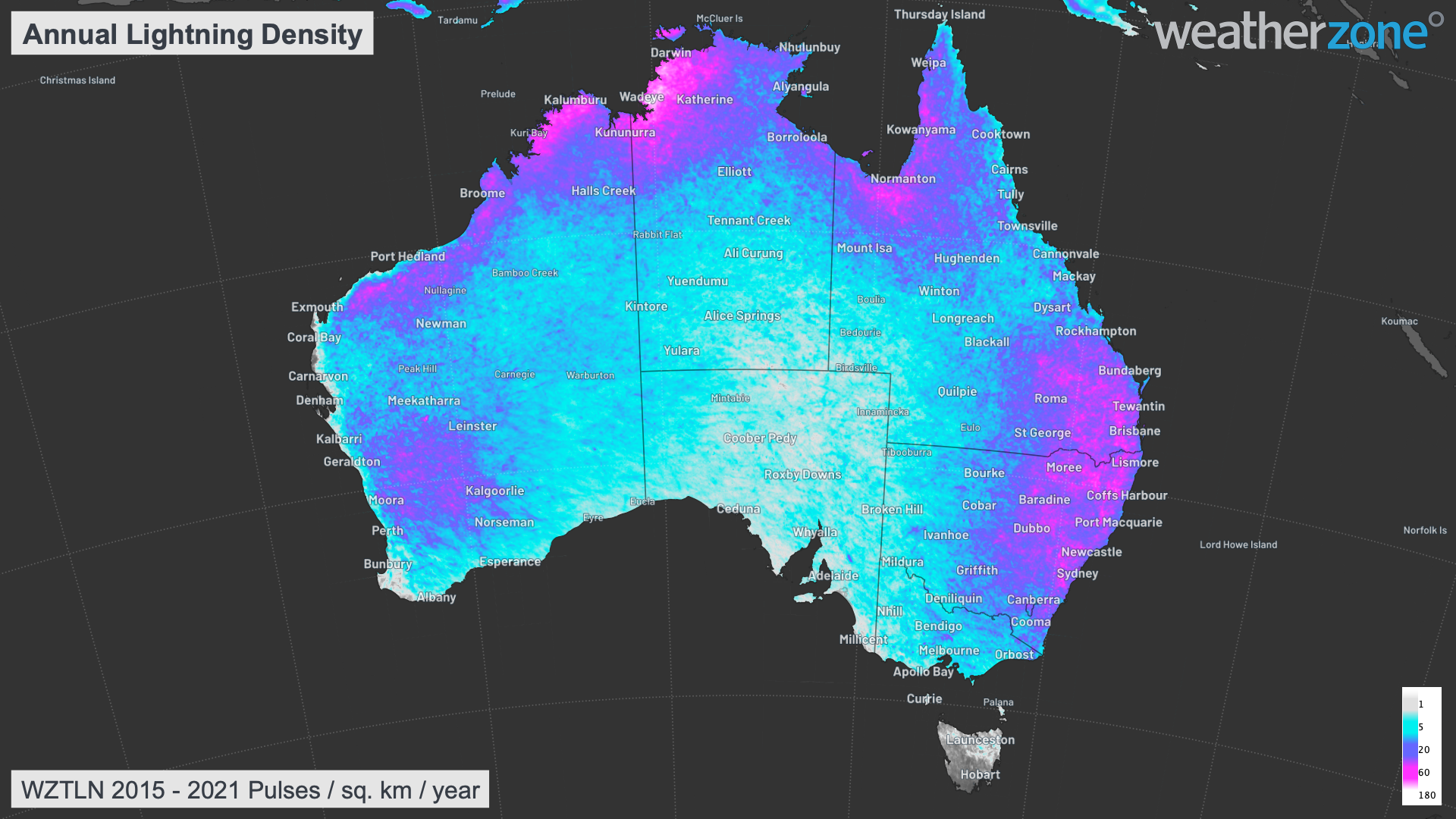Where is Australia's stormiest place?
Australia's severe thunderstorm season started off with a bang last week, with damaging winds, several tornadoes, heavy rain and large hail all featuring across southeastern and eastern Australia.
This outbreak of stormy weather kicked off the severe thunderstorm season in Australia. While storms can occur at any time of the year, they are most common and intense between September and March.
Spring and summer are the stormiest seasons in Australia due to an abundance of warmth and moisture, which are two of the three key ingredients needed for a thunderstorm to form:
- An unstable atmosphere, meaning air near the ground is much warmer than the air above it.
- Plenty of low-level moisture in the atmosphere.
- A trigger mechanism that causes air to rise from the surface, such as a cold front or a mountain range.
Where do storms occur in Australia?
Thunderstorms can strike in every state and territory in Australia. However, they are more frequent and severe where moisture and instability are available in greater quantities.
The map below shows the average annual lightning density across Australia, based on all of the lightning pulses detected by Weatherzone's Total Lightning Network between 2015 and 2021. It's important to note that each lightning strike may consist of several pulses.

Image: Average annual lightning pulse density for Australia, using data collected by the Weatherzone Total Lightning Network between 2015 and 2021.
The map above shows that Australia has several lightning hotspots.
The Golden Bolt award, for the most prolific lightning activity, goes to the western Top End and northern Kimberley. During Australia's northern wet season, this region sees huge amounts of moisture and instability, while sea breezes act as a trigger for storms on a near-daily basis.
Thunderstorms are also notoriously active more broadly across Australia's tropics during the wet season. This can be seen by the higher lightning strike density areas in the north of WA, the NT and Queensland.
There are also a few lightning hotspots outside the tropics in Australia.
The area stretching from southeast Queensland down to Victoria is a known lightning magnet in Australia. This is the stomping ground for the bulk of the country's storm chasing community.
Storms in this part of the country are usually caused by the interaction of warm, moisture-laden air from the tropics and much colder air masses coming up from the Southern Ocean. This volatile mixture creates some of Australia's most intense supercell thunderstorms, particularly over southeast Queensland and northeast NSW.
There is also a notable concentration of storms around the Great Dividing Range in eastern Australia, simply because the mountains act as a trigger for storms by helping air rise.
Another region of frequent lightning outside the tropics is the western and southwest inland of WA, to the south of Meekatharra and west of about Kalgoorlie. These storms are usually triggered by moisture feeding into low pressure troughs during the warmer months of the year.
Only a small proportion of thunderstorms in Australia are considered severe, based on the intensity of wind, rain and hail they produce. However, all thunderstorms cause lightning, which can be life-threatening.
Be sure to frequently check the radar and severe storm warnings in your area throughout the storm season and seek shelter if you see lightning or hear thunder.